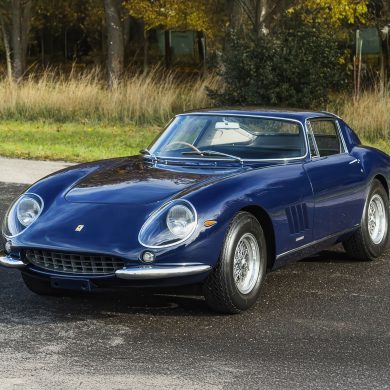Every Bugatti goes through endurance and high-speed testing while it is being developed, but aside from that, Bugatti also ensures that the cars also go through extreme heat and cold tests. This is true for every Bugatti model, even the few-offs like the Bugatti Centodieci.
For several days, the Centodieci was parked in the special climate chamber. The engineers conducted tests on the model at room temperature. They also ran some heat tests with the car at up to 50 degrees Celsius. Bugatti engineers then went to the other end of the spectrum and are now conducting tests on the car at sub-zero temperatures. For around half a day, the Centodieci was kept at sub-zero temperatures. It might seem to subject the hyper cars to such extreme measures, but the engineers want to ensure that even the tiniest titanium screw as well as the very last carbon part to reach a specified temperature and still work.
Bugatti engineers spend around a week in the climate chamber, testing the upcoming Centodieci and checking every component and parts while inside. The Technical Project Manager for one-off and few-off projects at Bugatti, Carl Heilenkötter shared, “Like any other Bugatti, the Centodieci has to perform impeccably at all temperatures, be it 50 degrees Celsius or minus 20 degrees Celsius. We owe this to our quality pledge and to our customers. With the climate chamber, we can replicate all kinds of different tests and precisely compare the results again and again.”
The tests done in the climate chamber – exposing the Centodieci to extreme heat and cold – is vital as it is the only way for the engineers to ensure that the Centodieci will function safely at all times in all conditions, even if technically, the client will not expose their vehicles to such extreme climate conditions.
A multitude of tests are done on the Centodieci during these climate tests. One of them is the cold test on the side windows. To measure the side window excessive force limitation, even a small production run of ten cars will still have to ensure that internal standards and legal requirements are met and complied with. Bugatti electrics/electronics development engineer Jülf Fiedler explained, “A side window has to recognize a defined resistance level and its raising be reversed if necessary.”
The software used on the side window motor have a set of predefined parameters to regulate the power that is needed to ensure a seamless operation. It also protects people through a stop/reversing function. If they didn’t identify resistance, the window can easily slice an apple, or even crush a person’s finger.
The side windows are raised and lowered hundreds of times and they determine the force using a measuring instrument. Everything has to be precisely coordinated, from the motor power to the seal resistance, friction, and the reversing gear and glass. If any changes are made on the seal material, window size, or the drive, they repeat the tests as the seal plastic behaves differently in different set-ups. Fiedler added, “The seal friction varies depending on the temperature, and this has to be taken into account by the software for the side window motor. The side windows have to rise reliably whatever the temperature and the excessive force limitation has to react reliably in the event of resistance and reverse the window.” For hours, the engineers work in the climate chamber testing the hyper sports car in sub-zero temperatures, while of course, dressed in cold protection suits, hats, and gloves.
Since the Centodieci has a lot of unique features, it is unsurprising that it has to be subjected to a lot of high-level technical checks. The Centodieci is the bridge between the second era of Bugatti under the Italian entrepreneur Romano Artioli as well as a tribute to the 1990s ultimate super sports car, the Bugatti EB 110.
A high-performance 8.0-liter W16 engine power the hyper sports car, it produces 1,176 kW/1,600 PS at 7,050-7,100 rpm. It was given a completely new bodywork, so it therefore behaves differently from its predecessor, which means that extensive development and testing are required.
Going back to the side window motor, the Centodieci went through a lot of tests and fine-tuning of the software until both Carl Heilenkötter and Jülf Fiedler were satisfied that the window regulators work perfectly even at double-digit sub-zero temperatures.
Over the next few weeks, the Bugatti engineers will be doing more tests on the Centodieci. They will be doing final high-speed test drives, which includes endurance testing that will cover more than 30,000 kilometers or 18,600 miles. This is in accordance with the detailed program of tests that will go on for several weeks.
Once the development team has completed the vehicles and all the tests have been done, production by hand will begin. All ten vehicles are scheduled to be delivered to their owners within the year.















